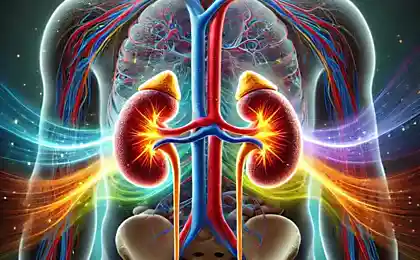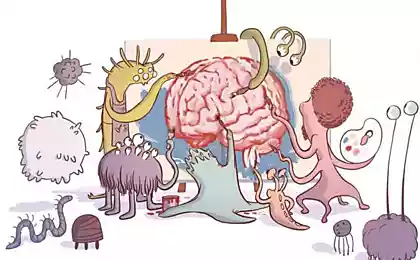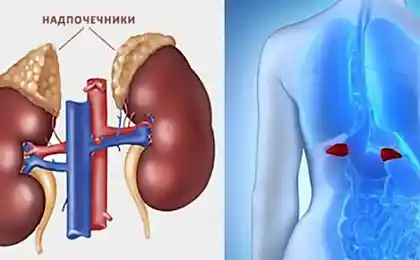157
Why Fear Can Become Chronic and How It Harms Your Health
The invisible enemy within us
How Chronic Fear Destroys Your Body and Mind, and What to Do About It
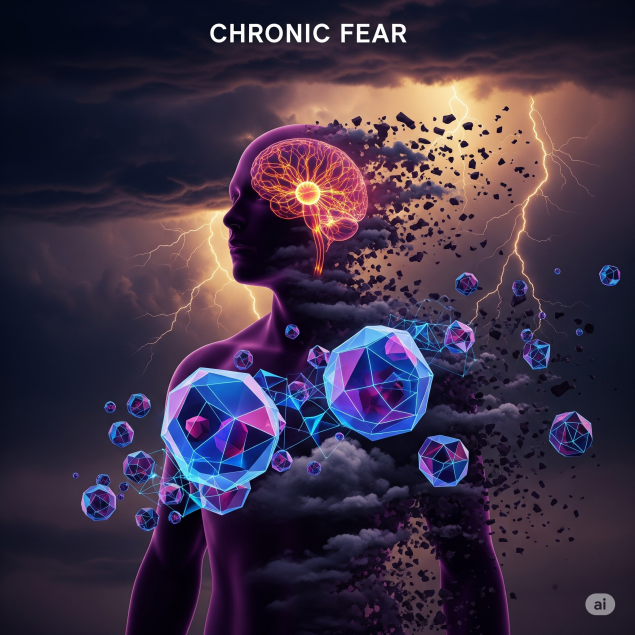
Imagine a Stone Age hunter who heard a saber-toothed tiger growl. His heart begins to beat frantically, muscles tense, breathing speeds up - the body mobilizes all the resources to fight or flee. After a few minutes, the danger passes and the body returns to normal. But what happens when this ancient survival mechanism gets stuck on for weeks, months, or even years?
Modern humans rarely encounter saber-toothed tigers, but our brains still respond to threats in the same way they did thousands of years ago. The only difference is that today's "tigers" are deadlines at work, financial problems, conflicts in relationships or global news. And unlike real predators, these modern stressors don’t go away.
Anatomy of chronic fear
Chronic fear is not just “increased anxiety” or “nervousness.” This is a complex physiological condition in which the stress response system operates in a state of constant readiness. According to the American Psychological Association, about 40% of adults experience symptoms of chronic anxiety.
Key fact: Chronic fear differs from ordinary fear in duration and intensity. If ordinary anxiety lasts minutes or hours, chronic fear can persist for months, creating a constant background of tension in your life.
The neurobiology of fear
At the heart of chronic fear is the hyperactivity of the amygdala, the amygdala body of the brain responsible for processing emotions and recognizing threats. In chronic fear, the amygdala becomes hypersensitive, perceiving even neutral stimuli as potentially dangerous. At the same time, the activity of the prefrontal cortex, the area responsible for rational thinking and emotional control, decreases.
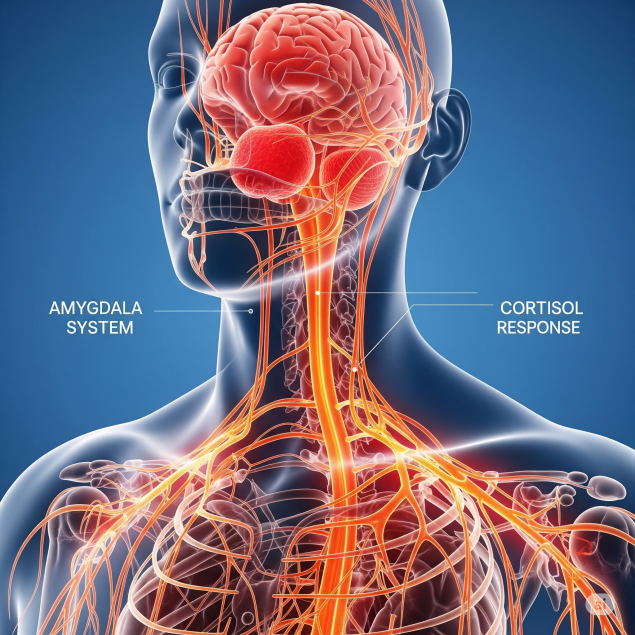
A study published in the journal Nature Neuroscience found that in people with chronic anxiety disorders, the volume of gray matter in the amygdala was increased by 12-15% compared to the control group. This means that the brain is literally rebuilt under the influence of constant fear.
Destructive effects on the body
Hormonal chaos
Chronic fear triggers a cascade of hormonal changes, the central element of which is constantly elevated levels of cortisol – the “stress hormone”. Normally, cortisol is released in stressful situations, helping the body mobilize energy, but then its level should decrease.
Danger: In chronic fear, cortisol levels remain consistently high, leading to serious health consequences. Excess cortisol suppresses the immune system, disrupts metabolism and increases the risk of type 2 diabetes.
Cardiovascular system under attack
The constant state of “combat readiness” exerts a tremendous load on the heart and blood vessels. Chronic fear increases blood pressure, increases heart rate and contributes to the development of arrhythmias. A large-scale study conducted by the Harvard School of Public Health involving more than 50,000 people found that people with chronic anxiety disorders have a 26% higher risk of developing coronary heart disease.
Immune system fails
The paradox of chronic fear is that a mechanism designed to protect us from danger ultimately makes us more vulnerable. Constantly elevated levels of stress hormones suppress the immune system, making the body defenseless against infections and slowing down healing processes.
Researchers at Carnegie Mellon University found that people with chronic stress are three times more likely to develop colds when they come into contact with the virus. Moreover, chronic fear is associated with an increased risk of developing autoimmune diseases when the immune system begins to attack the body’s own tissues.
Hidden Signs of Chronic Fear
Many people do not realize that they are living in a state of chronic fear, as it can masquerade as normal fatigue, irritability, or physical ailments. Here is the story of Maria, a 34-year-old marketer from Kiev:
“I thought I was just very busy at work. Constant headaches, sleep problems, frequent colds all seemed normal to my rhythm of life. It wasn't until I started having panic attacks that I realized something was seriously wrong. It turned out that I had been living in a state of constant anxiety for several years.

Signs of chronic fear that are often ignored:
- Constant muscle tension, especially in the neck and shoulders
- Problems with concentration and memory
- Chronic fatigue that does not go away after rest
- Digestive disorders for no apparent reason
- Increased sensitivity to sounds, light or touch
- Frequent headache or migraine
- Sleep disturbances: difficulty falling asleep or waking up frequently
Effective coping strategies
Breathing Techniques: Simple but Powerful Weapons
One of the most affordable and effective tools to combat chronic fear is controlled breathing. The 4-7-8 technique, developed by Dr. Andrew Weil, helps activate the parasympathetic nervous system responsible for relaxation and recovery.
4-7-8 technique:
- Exhale completely through your mouth.
- Close your mouth and breathe in through your nose, counting to four.
- Hold your breath, counting to seven.
- Exhale through your mouth, counting to eight
- Repeat the cycle 3-4 times
Cognitive behavioral therapy
Numerous studies confirm the effectiveness of cognitive behavioral therapy (CBT) in the treatment of chronic fear. CBT helps identify and change destructive thought patterns that support chronic anxiety. According to a meta-analysis published in the Journal of Anxiety Disorders, CBT is effective in 70-80% of anxiety treatments.
Physical activity as a medicine
Regular exercise is not just a way to keep fit, but also a powerful tool to combat chronic fear. During physical activity, endorphins are produced - the body's natural antidepressants, as well as BDNF (brain neurotrophic factor), which contributes to the growth of new neural connections.
Scientific fact: A Harvard study found that just 15 minutes of running or an hour of walking reduced the risk of depression by 26%. For people with chronic fear, regular exercise can be just as effective as medication.
Mindfulness practices and meditation
Mindfulness meditation helps break the cycle of catastrophic thoughts characteristic of chronic fear. Regular practice of meditation literally changes the structure of the brain, increasing the density of gray matter in areas associated with learning and memory, and reducing the size of the amygdala.
Life hacks for daily struggle with fear
Practical advice:
- Technique of grounding "5-4-3-2-1": Name 5 things you see, 4 you hear, 3 you feel, 2 you smell, 1 you taste.
- Limit the consumption of news: Set a specific time to read the news (no more than 30 minutes a day) and avoid it before bedtime
- Create a ritual of transition: Between work and home, take a 10-minute walk or listen to music to symbolically switch.
- Keep a gratitude journal: Write down three things you’re grateful for every night—it reprograms your brain to think positively.
- Use the 20-20-20 rule: Every 20 minutes, take a 20-second break looking at an object 20 feet (6 meters) away.
When professional assistance is needed
Chronic fear is not a sign of weakness, but a serious condition that may require professional intervention. Feel free to seek help if chronic fear is significantly affecting your daily life, work, or relationships.
Contact a specialist immediately if:
• You have thoughts of self-harm.
• You avoid everyday activities out of fear.
• Use alcohol or drugs to combat anxiety
• Physical symptoms become unbearable
Chronic fear is not a sentence, but a challenge that can be overcome. Understanding the mechanisms of its effects on the body is the first step to liberation. Using science-based methods and not hesitate to seek professional help, you can regain control of your life and health. Remember, your brain has an amazing ability to change at any age. Every day is a new opportunity to start the path to healing.
Glossary of terms
Amygdala (almond-shaped body) The structure of the limbic system of the brain responsible for processing emotions, especially fear and anxiety.
cortisol A steroid hormone produced by the adrenal glands in response to stress. With chronic discharge, it has a devastating effect on the body.
Cognitive behavioral therapy (CBT) A psychotherapeutic approach aimed at changing destructive patterns of thinking and behavior.
BDNF neurotrophic factor of the brain, a protein that promotes the growth and survival of neurons.
Parasympathetic nervous system Part of the autonomic nervous system responsible for resting and restoring the body.
endorphins A group of chemical compounds naturally produced in the human body that can reduce pain and cause a sense of euphoria.
Prefrontal cortex The area of the cerebral cortex responsible for executive function, decision-making and emotion control.
6 signs that you are not an introvert, but an emotionally restrained person
7 Interesting Questions to Rethink Your Life










